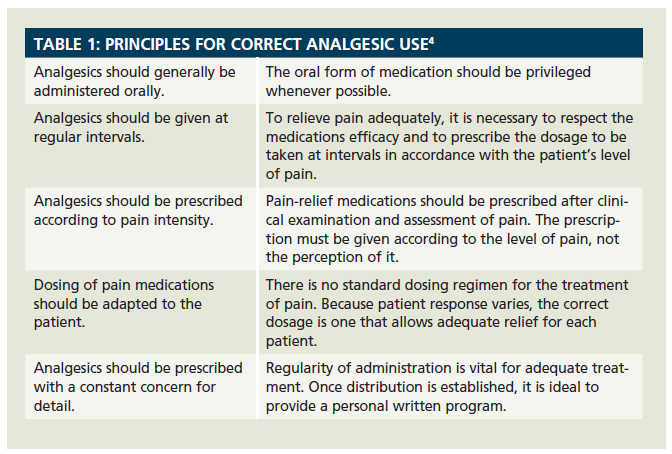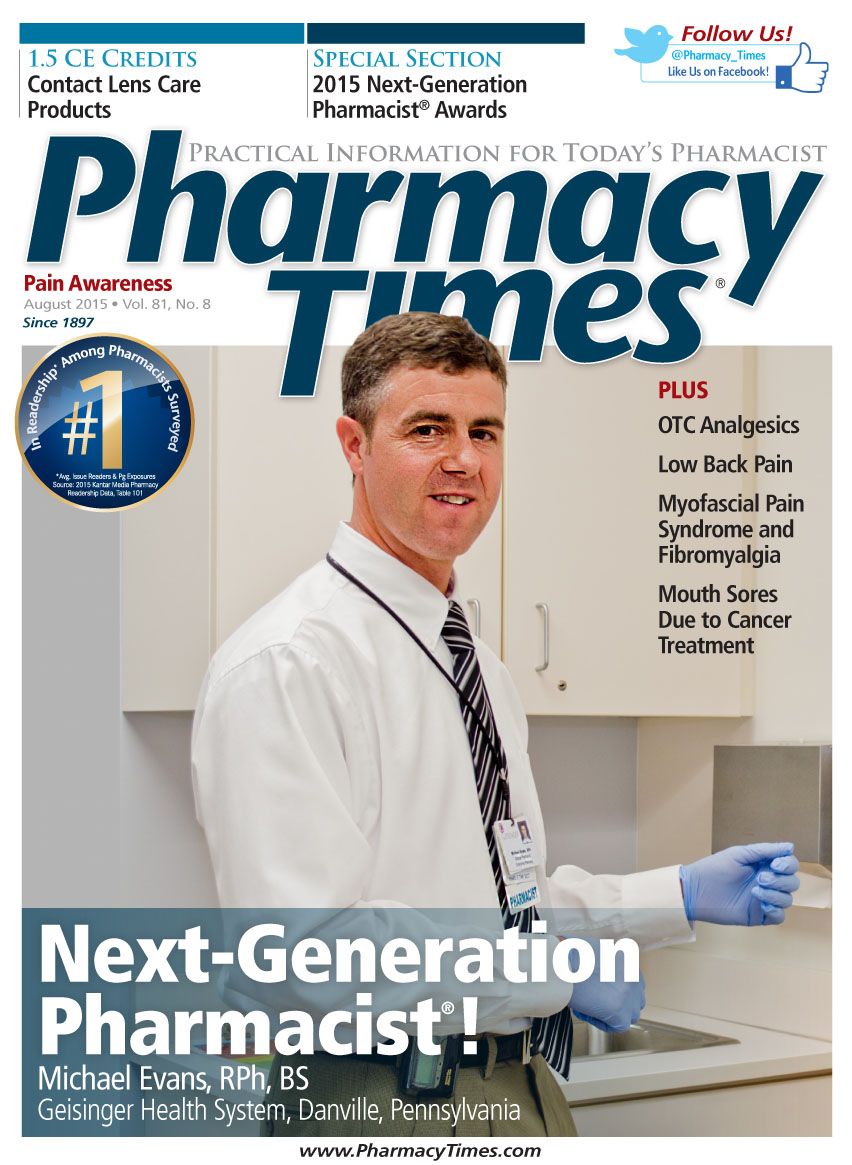Publication
Article
Pharmacy Times
General Pain: Optimizing Therapy
Author(s):
Pain is associated with a variety of injuries and diseases, and is often the disease itself.
Pain is associated with a variety of injuries and diseases, and is often the disease itself.1 The definition of pain, developed by a taxonomy taskforce of the International Association for the Study of Pain, is “an unpleasant sensory and emotional experience that is associated with actual or potential tissue damage or described in such terms.” Pain affects more Americans than diabetes, heart disease, and cancer combined, and is the most common reason individuals access our health care system. With millions suffering from acute and chronic pain annually, pain is a major contributor to national health care costs.2
Background
There are several different classification systems used to describe pain.3 Most commonly, pain is classified according to its duration and etiology. Acute pain is defined as pain an individual may endure for less than 3 months; chronic pain lasts longer. Furthermore, acute pain is an indicator of tissue damage or the potential for further injury; chronic pain, which can be a disease itself, continues beyond this “alert” phase and extends the expected time frame for healing.
Based on etiology, pain can be divided into nociceptive and neuropathic pain:
- Nociceptive pain comprises somatic and visceral pain, both of which arise from the stimulation of nociceptors. An impulse is transmitted from the site of the pain through the spinal cord to the brain for interpretation and reaction. Somatic pain arises from injury to body tissues, tends to be localized, and is described as a sharp, aching, and throbbing pain in nature. Visceral pain, which arises from internal organs, tends to be poorly localized and is described as a deep and dull pain.3
- Neuropathic pain arises from damage, dysfunction, or injury to the peripheral or central nervous system (CNS), and is typically described as a burning, tingling, and shooting pain. This damage to the nervous system can be secondary to medications or various peripheral and CNS diseases.3

Treatment
In 1986, the World Health Organization developed guidelines, also known as the “analgesic ladder,” for physicians to use when treating pain resulting from cancer.4 The guidelines have since been updated, and adaptions have been made to treat both acute and chronic noncancer pain as well. Although the guidelines remain controversial, they rest on several principles for the correct use of analgesics that remain applicable today (Table 14).4 For the purpose of this section, we will focus on the treatment of nociceptive pain.
Pain can be managed through the use of a number of medications, some of which are more effective in treating nociceptive pain. These analgesics are divided into groups based on their ability to relieve pain (online Table 26). Patients experiencing mild pain are recommended to initiate therapy with nonopioid analgesics, the most common of which are nonsteroidal anti-inflammatory drugs (NSAIDs). NSAIDs are available as OTC and prescription medications. Along with their analgesic properties, these medications have the ability to decrease inflammation.
It is imperative for patients receiving NSAIDs to be educated on the risks of gastrointestinal bleeding and cardiovascular events associated with their use. Patients are encouraged to remain hydrated, as approximately 1% to 5% of patients receiving NSAIDs experience nephrotoxicity.6 Acetaminophen is an OTC medication that is generally well tolerated, is absent of many drug—drug interactions, and does not elevate blood pressure. Patients, however, are not to exceed the recommended daily dose of 4 g and should avoid concomitant use of alcohol due to the drug’s association with liver toxicity.6
In patients who may be experiencing mild to moderate pain, a mild opioid may be added to the nonopioid analgesics mentioned previously. Opioids such as codeine, tramadol, and hydrocodone are typically used for this degree of pain.5 Patients should be reminded of the maximum daily dosages of the nonopioid medications used in combination with opioid therapy. Education on adverse effects (AEs) of the opioids should also be provided. Constipation, nausea, and sedation are frequent AEs associated with opioid use; pruritus and urinary retention are less common AEs. Patients should be educated that opioids can also slow reaction time, cause drowsiness, or affect their ability to drive or operate heavy machinery.7
A higher-potency opioid with an AE profile similar to the opioids mentioned previously is recommended for patients with moderate to severe pain.5 Strong opioids, such as morphine, hydromorphone, and fentanyl, are typically used for this level of pain. These medications, along with the previous opioids mentioned, have been divided into 5 schedules. These classifications are based on whether the medications currently have an accepted medical use for treatment in the United States and their relative abuse potential.
Table 2: Class of Analgesics6
Nonopioid analgesics
Acetaminophen
Ibuprofen
Naproxen
Weak opioids
Codeine
Hydrocodone
Tramadol
Strong opioids
Morphine
Fentanyl
Oxycodone
Hydromorphone
Role of the Pharmacist
Pharmacists play an essential role in helping patients who experience acute or chronic noncancer pain. They should be able to assess and manage pain and have an in-depth understanding of the medications used in pain management. Pharmacists are often the first point of contact for patients seeking nonprescription analgesics and advice regarding prescription analgesics.8 Pharmacist counseling regarding a medication’s proper use and strategies to minimize AEs will assist in the optimal management of a therapy. The ability of pharmacists to perform equianalgesic opioid conversions and complete incomplete cross-tolerance dose reductions is also vital.9
Dr. Moore is an assistant professor at Howard University College of Pharmacy.
References
- AAPM facts and figures on pain. The American Academy of Pain Medicine website. www.painmed.org/patientcenter/facts_on_pain.aspx#overview. Accessed July 12, 2015.
- Pain management. National Institutes of Health website. http://report.nih.gov/nihfactsheets/ViewFactSheet.aspx?csid=57. Accessed July 12, 2015.
- ACPA work sheet
- Vargas-Schaffer G. Is the WHO analgesic ladder still valid? Twenty-four year experience. Can Fam Physician. 2010;56(6):516-517,e202-e205.
- Tomas M, Javier N. Persistent non-cancer pain management in the older adult. Med Health RI. 2010;93(7):216-218.
- Blondell RD, Azadfard M, Wisniewski AM. Pharmacologic therapy for acute pain. Am Fam Physician. 2013;87(11):766-772.
- Schilser RE, Groninger H, Rosielle DA. Counseling patients on side effects and driving when starting opioids #248. J Palliat Med. 2012;15(4):484-485. doi: 10.1089/jpm.2012.9596.
- Herndon C, Kraggs R, Strassels S, Wiffen P. IASP curriculum on pain for pharmacy. www.iasp-pain.org/Education/CurriculumDetail.aspx?ItemNumber=2053. Updated January 20, 2014. Accessed July 14, 2015.
- Barbee J, Chessher J, Greenlee M. Pain management: the pharmacist’s evolving role. Pharmacy Times website. www.pharmacytimes.com/publications/health-system-edition/2015/july2015/Pain-Management-The-Pharmacists-Evolving-Role. Published July 13, 2015. Accessed July 15, 2015.






